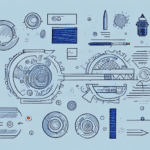What Is Kitting?
Kitting is a supply chain and manufacturing strategy that involves grouping individual components or parts together into a single kit, which is then used to assemble a product or complete a specific task. This process streamlines production by ensuring that all necessary components are readily available in one package, reducing the time and effort required to gather parts from various locations.
Benefits of Kitting in Manufacturing
Increased Efficiency
By consolidating components into kits, manufacturers can significantly speed up the assembly process. Workers spend less time searching for parts, which leads to faster production cycles and higher output rates. According to a study by Manufacturing.net, organized kitting systems can improve manufacturing productivity by up to 30%.
Cost Savings
Kitting reduces labor costs by minimizing the time workers spend locating and handling individual parts. Additionally, bulk purchasing of components for kits can lead to economies of scale, resulting in lower per-unit costs. These savings can be passed on to customers, making products more competitive in the market.
Improved Inventory Management
Implementing a kitting system simplifies inventory tracking and management. With all components for a particular product grouped together, businesses can easily monitor stock levels, forecast demand, and reduce the likelihood of overstocking or stockouts. An effective kitting system contributes to better overall inventory accuracy and control.
Enhanced Quality Control
Kitting ensures that all necessary components are present before the assembly process begins, reducing the risk of missing or incorrect parts. This pre-assembly check enhances the quality of the final product and decreases the likelihood of errors and defects, leading to higher customer satisfaction.
Types of Kitting Systems
Pre-Packaged Kits
These kits are assembled in advance and contain all the components needed for a specific product or task. Pre-packaged kits are ideal for high-volume production environments where the same components are frequently required.
Just-In-Time (JIT) Kits
JIT kits are assembled on-demand based on current production needs. This approach minimizes inventory holding costs and reduces waste by ensuring that components are only packaged when needed.
Service and Repair Kits
Used in maintenance and repair operations, these kits contain tools and replacement parts necessary for servicing equipment. By having everything in one kit, technicians can perform repairs more efficiently.
Implementing an Efficient Kitting System
Identify Components
Start by listing all the components required for each product or task. Group items logically to ensure that kits are comprehensive and organized.
Select Appropriate Packaging
Choose packaging materials that protect components and facilitate easy access. The packaging should also support the scalability of the kitting process.
Establish Tracking and Documentation
Implement an inventory management system that tracks kit assembly, component usage, and kit distribution. Technologies such as barcode scanning or RFID can enhance tracking accuracy.
Optimize Facility Layout
Design the facility layout to support efficient kitting operations. Position kitting stations near assembly lines to reduce transportation time and streamline the workflow.
Train Employees
Provide comprehensive training to employees involved in the kitting process. Ensure they understand the importance of accuracy, efficiency, and adherence to standardized procedures.
Common Mistakes to Avoid
Poor Planning
Failing to thoroughly plan the kitting process can lead to inefficient workflows and increased errors. Take the time to map out each step and consider potential challenges before implementation.
Inadequate Training
Without proper training, employees may struggle to follow kitting procedures correctly, resulting in mistakes and reduced productivity. Invest in continuous training programs to maintain high standards.
Neglecting Quality Control
Overlooking quality control measures can compromise the integrity of kits, leading to defective products and customer dissatisfaction. Implement regular quality checks to ensure all kits meet the required specifications.
Best Practices for Optimizing Kitting Processes
Regular System Audits
Conduct periodic audits of the kitting system to identify areas for improvement. Analyze performance metrics and gather feedback from employees to make data-driven adjustments.
Leverage Technology
Utilize advanced technologies such as automation, robotics, and data analytics to enhance the efficiency and accuracy of the kitting process. These tools can help reduce manual labor and minimize errors.
Continuous Improvement
Adopt a mindset of continuous improvement by regularly reviewing and refining kitting procedures. Stay updated with industry trends and incorporate best practices to maintain a competitive edge.
The Future of Kitting in Manufacturing
As the manufacturing industry evolves, kitting systems are expected to become more automated and integrated with other supply chain processes. Advances in artificial intelligence and machine learning will enable predictive analytics, optimizing kit assembly based on real-time demand and production schedules. Additionally, the rise of Industry 4.0 will facilitate greater connectivity and data sharing, enhancing the overall efficiency and responsiveness of kitting operations.
Conclusion: Is Kitting Right for Your Business?
If your business aims to enhance efficiency, reduce costs, and improve quality control within your manufacturing or supply chain operations, implementing a kitting system might be the solution you need. By organizing components into cohesive kits, businesses can streamline their production processes, achieve better inventory management, and deliver higher-quality products to their customers. Evaluate your specific needs and consider adopting kitting to drive your business forward.






















